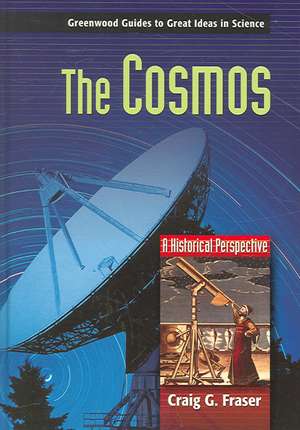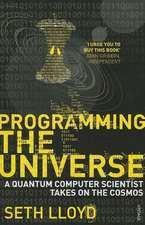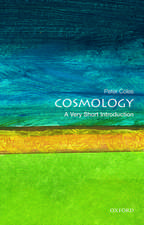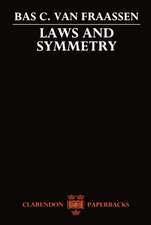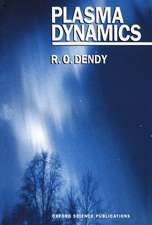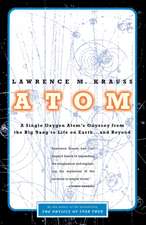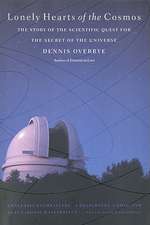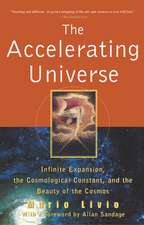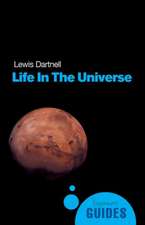The Cosmos: A Historical Perspective: Greenwood Guides to Great Ideas in Science
Autor Craig G. Fraseren Limba Engleză Hardback – 29 iul 2006 – vârsta până la 17 ani
Preț: 276.29 lei
Preț vechi: 477.73 lei
-42% Nou
Puncte Express: 414
Preț estimativ în valută:
52.87€ • 55.34$ • 44.00£
52.87€ • 55.34$ • 44.00£
Carte tipărită la comandă
Livrare economică 31 martie-14 aprilie
Preluare comenzi: 021 569.72.76
Specificații
ISBN-13: 9780313332180
ISBN-10: 0313332185
Pagini: 200
Dimensiuni: 178 x 254 x 18 mm
Greutate: 0.59 kg
Editura: Bloomsbury Publishing
Colecția Greenwood
Seria Greenwood Guides to Great Ideas in Science
Locul publicării:New York, United States
ISBN-10: 0313332185
Pagini: 200
Dimensiuni: 178 x 254 x 18 mm
Greutate: 0.59 kg
Editura: Bloomsbury Publishing
Colecția Greenwood
Seria Greenwood Guides to Great Ideas in Science
Locul publicării:New York, United States
Notă biografică
CRAIG G. FRASER is a professor in the Institute for History and Philosophy of Science and Technology at the University of Toronto. He is the editor-in-chief of the journal Historia Mathematica, and has written numerous articles on the history of modern cosmology.
Cuprins
PrefaceTimelineIntroductionabylonian and Chinese Astronomy and CosmologyGreek Astronomy and CosmologyCosmology from Islam to CopernicusCosmology from Brahe to NewtonStellar Astronomy: The Universe Beyond the Solar SystemA Universe of Galaxies: The Triumph of the Island Universe TheoryThe Expansion of the UniverseFrom Universal Expansion to the Big BangThe Big-Band Universe: Grom 1965 to the 21st CenturyGlossaryBibliography
Recenzii
The complex relationship between theories (including theories that eventually proved to be incorrect) and observation is a central focus throughout this concise, thought-provoking historical analysis. Highly recommended. Upper-division undergraduates through professionals.
[A] good account of the development of cosmology over the last two or three millennia.
From Plato's erroneous promulgation that the planets have circular orbits to calculation in 2003 of Hubble's constant, Fraser offers a lucid introduction to historical perspectives on the nature of the cosmos. The history of Western (including Islamic) cosmology is divided into four periods: early mythologies, classical Greek thought through Copernicus, heliocentric and Newtonian views, and the modern era starting in the 1920s with realization of the multi-galactic nature of the universe. The volume includes a timeline, a glossary, and B&W illustrations.
[A] good account of the development of cosmology over the last two or three millennia.
From Plato's erroneous promulgation that the planets have circular orbits to calculation in 2003 of Hubble's constant, Fraser offers a lucid introduction to historical perspectives on the nature of the cosmos. The history of Western (including Islamic) cosmology is divided into four periods: early mythologies, classical Greek thought through Copernicus, heliocentric and Newtonian views, and the modern era starting in the 1920s with realization of the multi-galactic nature of the universe. The volume includes a timeline, a glossary, and B&W illustrations.
